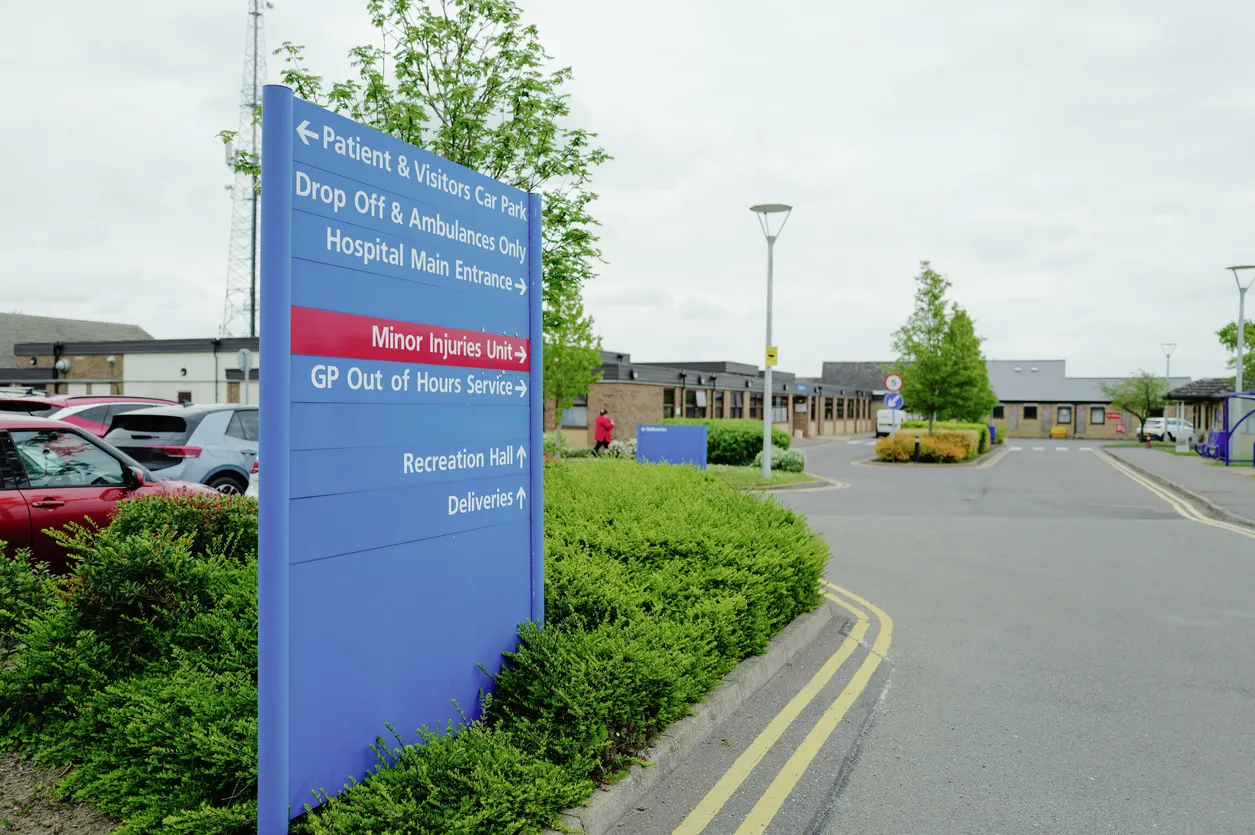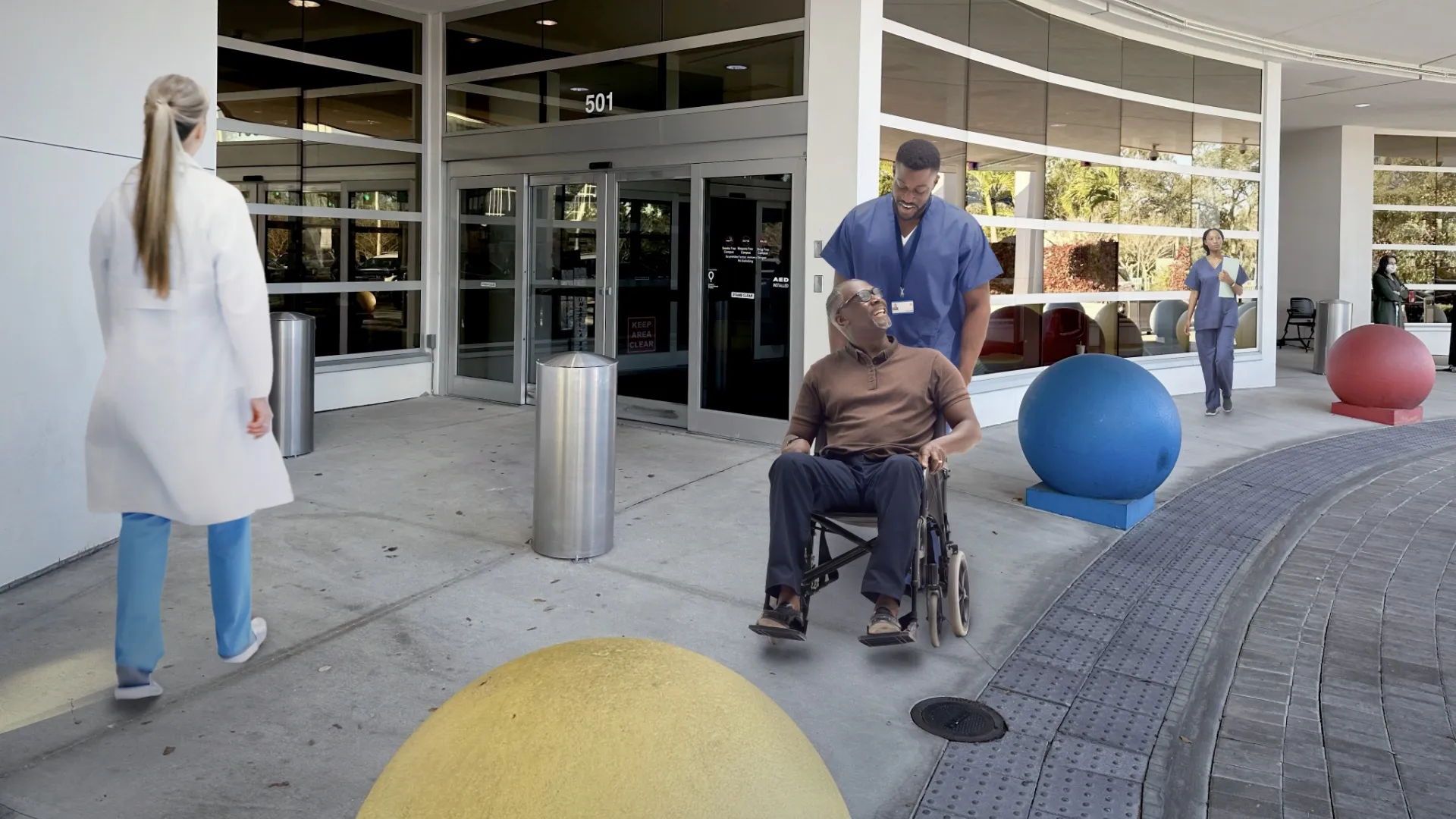Hospital violence continues to escalate. One in four nurses faces physical assault at work, making workplace safety in healthcare a priority. In response, California Assembly Bill 2975 is a groundbreaking law requiring automated weapons screening at specific hospital entrances. If you’re responsible for hospital security in California, this mandate isn’t just another compliance checkbox. It’s a fundamental shift in caregiver and patient protection.
SoundThinking’s webinar “Complying with AB 2975: How Hospitals Can Prepare and Protect” paired Customer Success Director Robin Rice with Cal/OSHA Deputy Chief of Health Eric O. Berg. Together, they explained California’s new hospital weapons-screening mandate, walked through the rule-writing calendar, and offered step-by-step advice for security leaders planning compliance efforts early.
What is AB 2975?
Signed into law in September 2024, AB 2975 requires most California hospitals to screen all individuals entering through the main visitor entrances, emergency department entrances, and – if separate – labor-and-delivery entrances using an automated weapons-detection device.
The device must be operated by trained, non-clinical staff, and hospitals must post clear signage about the screening. Security personnel are required to complete eight hours of de-escalation training, and hospitals must retain screening data for reporting purposes. While Cal/OSHA is still in the rule-making process to establish detailed implementation guidelines under AB 2975, hospitals should begin preparing now.
Understanding Cal/OSHA’s Rulemaking Process
During the webinar, Deputy Chief Eric Berg explained Cal/OSHA’s two-phase rulemaking process, outlining how hospitals and stakeholders can provide input before the final regulations take effect:
Phase 1: Advisory Committee
- Draft language posted for public comment
- Virtual meetings for stakeholder input
- Opportunity to shape technical requirements
Phase 2: Standards Board
- Formal rulemaking procedures
- Public hearings
- Final adoption and enforcement details
Pro tip: Subscribe to Cal/OSHA’s email lists now, https://dir.ca.gov/email/listsub.asp. Check the box for “DOSH Research and Standards Stakeholders” to receive notifications about upcoming Cal/OSHA advisory meetings, new draft regulatory language releases, meeting schedule changes, and document updates.
Your Pre-Compliance Roadmap
In the time before final regulations are cemented, hospitals can begin the pre-compliance planning. The webinar outlined key steps and time frames to consider for implementing weapons detection at the required entrances.
Immediate Actions (Next 30 Days):
- Conduct entrance-specific risk assessments
- Map current patient and visitor flow patterns
- Document existing security layers (cameras, access control, guards)
- Calculate current security staffing costs
Planning Phase (Next 90 Days):
- Form a multidisciplinary implementation team
- Include IT, facilities, HR, and clinical leadership
- Develop budget projections for FY 2026-27
- Research detection system vendors
Pilot Phase (6-12 Months Out):
- Test technology at the highest-volume entrances
- Measure throughput rates and false positives
- Draft standard operating procedures
- Train the initial operators
Real-World Lessons in Hospital Weapons Detection Implementation
A use case discussed during the webinar was from the view of a security director at a hospital who transformed their security model with striking results. Before implementing weapons detection, they were paying $1.3 million annually in guard wages while achieving only 69% efficiency. Coverage gaps plagued shift changes, and with more than 20 unfilled security positions, the traditional staffing model had reached its breaking point.
The transformation to an unmanned weapons detection solution proved remarkable. Rather than eliminating jobs, the hospital redeployed guards from door-watching duties to higher-value security tasks throughout the facility. The technology provided consistent 24/7 coverage without the vulnerabilities of human fatigue or staffing shortages.
Your Next Steps
AB 2975 isn’t just about the mandate; it’s a response to lowering workplace violence in healthcare. The hospitals that thrive will be those that view compliance as an opportunity to modernize their entire security approach. As emphasized in the webinar’s use case, the hospital use case, technology serves as a force multiplier, not a job replacer. Technology can create a sustainable staffing model that actually enhances both security effectiveness and employee satisfaction.




